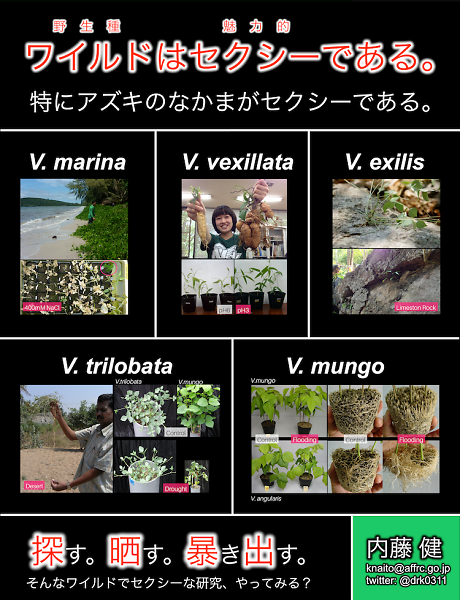OIST Marine Genomics Seminar Ser 33rd by Ken Naito

Date
Location
Description
Genus Vigna consists of legume crops such as azuki bean as well as a number of wild species. One of the most outstanding features of the genus Vigna is the great adaptability of the wild species to severe environmental conditions, which includes high salt (~400mM NaCl), acid (~pH3) or alkaline (~pH10) soil, drought and flooding. By figuring out genetic mechanisms of their adaptations, it would be possible to generate novel stress-tolerant crops. Since most Vigna species are capable of interspecific crosses, are diploids, and have relatively small genomes (550Mb), comparative genetic and genomic studies can be easily performed. In short, Vigna species are the ideal material to understand environmental adaptation of higher plants.
To promote successive cloning of valuable genes, we are now sequencing genomes of azuki bean (V. angularis) and 10 wild species, using PacBio RSII. Compared to Illumina-based assembly, the PacBio-based assembly achieved 100 times longer contig sizes and 100 times less amount of gaps.
Obtaining the whole genome sequences have enabled us to easily identify stress tolerance QTLs. Our first target is salt tolerance, because almost half of the irrigated croplands have problems of accumulating salt. Thus we developed some F2 populations derived from crosses between accessions of salt-tolerant and of salt-sensitive. RAD-seq analysis following whole genome sequencing identified only one or two QTLs with strong effects, indicating salt tolerance evolution had been genetically simple process in genus Vigna.
Our next step will be combining genetic/genomic data with transcriptomic data to pinpoint the responsible genes.
Attachments
Subscribe to the OIST Calendar: Right-click to download, then open in your calendar application.



